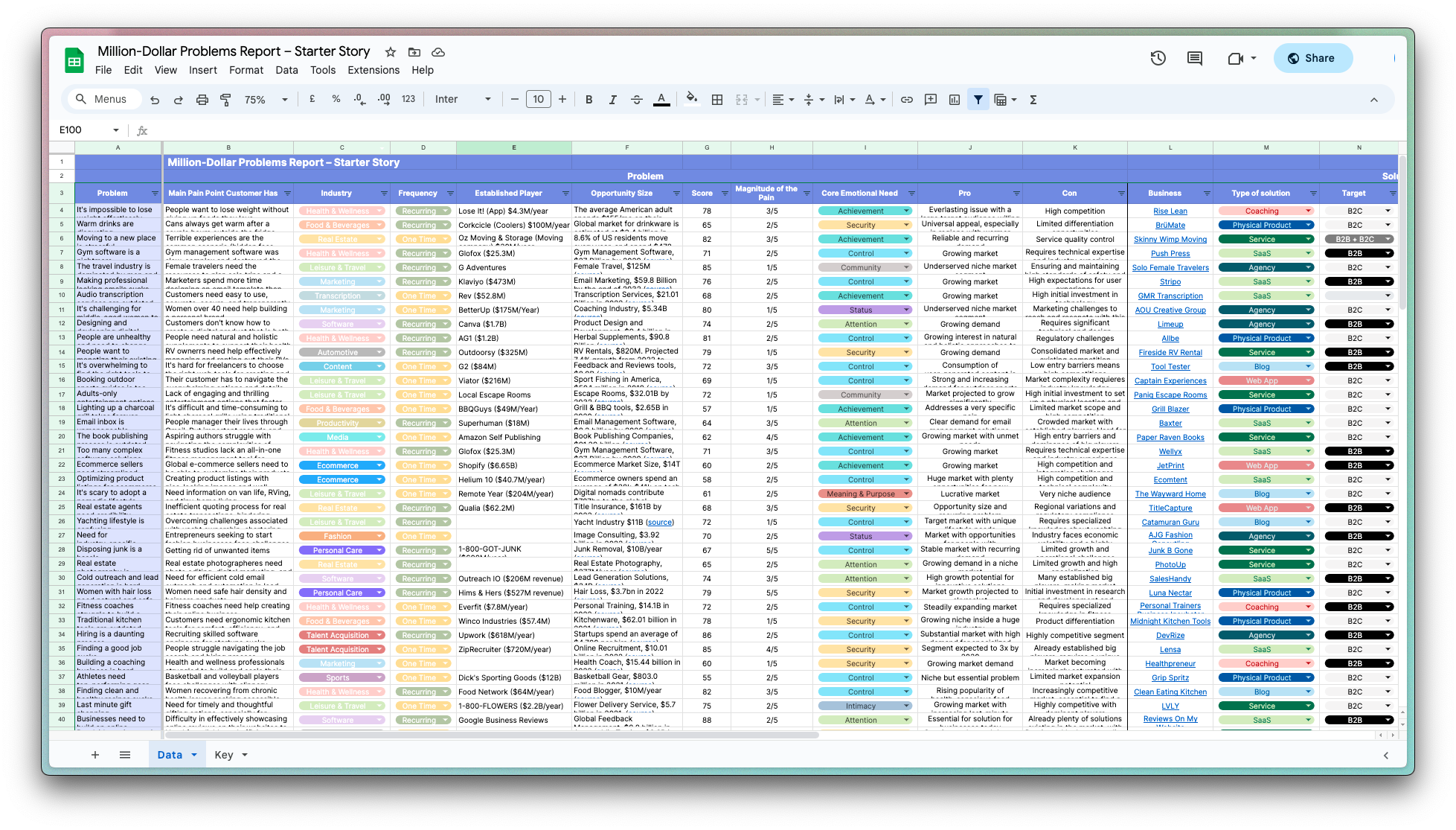|
|
|
$23K
monthly
|
30
days
|
—
per visitor
|
$196
to start
|
91
out of 100
|
|
|
|
|
|
|
Social media growth courses for solopreneurs.
|
$317K
monthly
|
90
days
|
$2.35
per visitor
|
$1K
to start
|
90
out of 100
|
|
|
|
|
|
|
No-code email template builder for marketers.
|
$410K
monthly
|
90
days
|
$0.62
per visitor
|
$100K
to start
|
58
out of 100
|
|
|
|
|
|
|
No-code platform for building web apps.
|
$60K
monthly
|
30
days
|
$0.09
per visitor
|
—
to start
|
57
out of 100
|
|
|
|
|
|
|
"Simple website builder for everyone."
|
—
monthly
|
180
days
|
—
per visitor
|
$500
to start
|
64
out of 100
|
|
|
|
|
|
|
Create Viral Video Memes In Seconds.
|
$2K
monthly
|
—
days
|
—
per visitor
|
$80
to start
|
93
out of 100
|
|
|
|
|
|
|
|
—
monthly
|
—
days
|
—
per visitor
|
$299
to start
|
64
out of 100
|
|
|
|
|
|
|
AI-powered scraper for effortless data extraction
|
$142K
monthly
|
—
days
|
—
per visitor
|
$6.4K
to start
|
73
out of 100
|
|
|
|
|
|
|
|
$8.5K
monthly
|
40
days
|
—
per visitor
|
$5K
to start
|
92
out of 100
|
|
|
|
|
|
|
|
$80K
monthly
|
19
days
|
$0.03
per visitor
|
$20
to start
|
90
out of 100
|
|
|
|
|
|
|
AI-Powered SMS Marketing for Shopify Stores
|
$85K
monthly
|
90
days
|
$3.40
per visitor
|
$30K
to start
|
58
out of 100
|
|
|
|
|
|
|
AI-powered resume builder for job seekers.
|
$215K
monthly
|
—
days
|
—
per visitor
|
—
to start
|
62
out of 100
|
|
|
|
|
|
|
"SEO backlink guide for startup beginners."
|
$5.2K
monthly
|
60
days
|
$1.49
per visitor
|
$500
to start
|
93
out of 100
|
|
|
|
|
|
|
AI customer support agents for SaaS businesses.
|
$25K
monthly
|
14
days
|
$0.50
per visitor
|
$99
to start
|
83
out of 100
|
|
|
|
|
|
|
AI automation solutions tailored for consultants.
|
$10K
monthly
|
100
days
|
$1.00
per visitor
|
$50K
to start
|
66
out of 100
|
|
|
|
|
|
|
AI tool for transforming voice notes.
|
$15K
monthly
|
1
days
|
$0.30
per visitor
|
$32
to start
|
91
out of 100
|
|
|
|
|
|
|
|
$10K
monthly
|
7
days
|
$0.91
per visitor
|
$500
to start
|
95
out of 100
|
|
|
|
|
|
|
Email marketing solution for bootstrappers.
|
$20K
monthly
|
330
days
|
$5.02
per visitor
|
$5K
to start
|
90
out of 100
|
|
|
|
|
|
|
|
$3.8K
monthly
|
7
days
|
$0.06
per visitor
|
—
to start
|
80
out of 100
|
|
|
|
|
|
|
AI marketing tools for Solopreneurs.
|
—
monthly
|
30
days
|
—
per visitor
|
$100
to start
|
83
out of 100
|
|
|
|
|
|
|
PostgreSQL query optimization tool for developers.
|
$3K
monthly
|
120
days
|
$0.38
per visitor
|
$5K
to start
|
82
out of 100
|
|
|
|
|
|
|
|
$13K
monthly
|
25
days
|
—
per visitor
|
$5K
to start
|
90
out of 100
|
|
|
|
|
|
|
|
$100K
monthly
|
41
days
|
—
per visitor
|
$0
to start
|
52
out of 100
|
|
|
|
|
|
|
|
$6K
monthly
|
—
days
|
—
per visitor
|
—
to start
|
65
out of 100
|
|
|
|
|
























